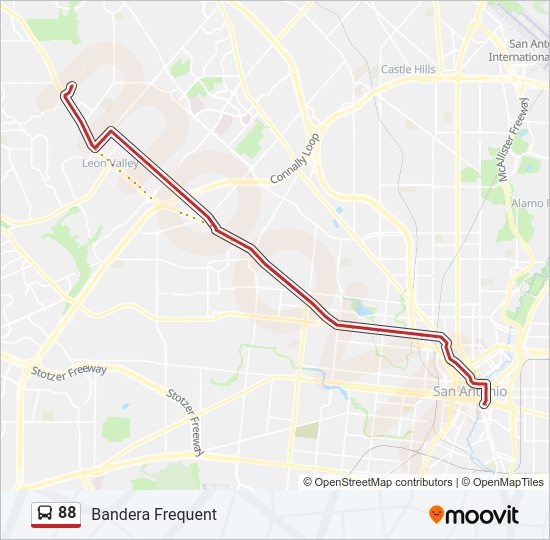In today’s fast-paced world, the need for efficient and effective solutions has never been more critical. One of the most groundbreaking advancements in technology and infrastructure is represented by N88. This innovative concept has emerged not only as a trend but also as a necessity in various sectors, including housing, transportation, and urban development. In this article, we will delve into what N 88 is, how it functions, and the myriad benefits it brings to modern living.


Read more – N 88
Understanding N 88: What Is It?


N 88 is an umbrella term that encapsulates various modern technologies and solutions designed to enhance our quality of life. It primarily focuses on optimizing energy consumption, improving connectivity, and fostering sustainable living. To grasp its essence, we must explore several key aspects of N 88.
Origins and Development of N 88
The concept of N 88 originated from the growing demand for smarter living environments. Urbanization, climate change, and resource depletion prompted experts to devise a system that could address these challenges. Over the years, significant research and development have gone into creating an integrated framework that encompasses renewable energy solutions, smart technology, and urban planning.
Innovation in this realm draws inspiration from previous technological breakthroughs. By learning from earlier models, such as smart cities and eco-friendly buildings, N 88 has developed into a comprehensive solution that caters to diverse needs while prioritizing sustainability and resilience.
Core Principles of N 88
At its core, N 88 operates on several fundamental principles, each contributing to its overarching goal of creating a more livable environment. These principles include energy efficiency, connectivity, sustainability, and community engagement.
Energy efficiency is achieved through incorporating renewable energy sources, such as solar panels, wind turbines, and energy storage systems. By harnessing natural resources, N 88 minimizes reliance on fossil fuels, reducing carbon footprints and promoting ecological balance.
Connectivity plays a crucial role in N 88’s framework. Smart technologies, including Internet of Things (IoT) devices, create seamless communication between various components of urban infrastructure—such as transportation systems, homes, and public spaces—enhancing overall functionality.
Sustainability is at the heart of N 88. Eco-friendly materials, waste reduction strategies, and water conservation measures form the foundation of building projects and urban developments, ensuring they are environmentally viable for future generations.
Lastly, community engagement fosters inclusivity, allowing residents to actively participate in decision-making processes related to urban planning and design. This principle ensures that N 88 reflects the needs and aspirations of those who inhabit these spaces.
The Role of Technology in N 88
Technology is a driving force behind N 88’s success. It integrates cutting-edge innovations across various domains, from energy management systems to transportation networks. The role of technology can be broken down into several pivotal components.
Smart grids are one significant aspect, enabling real-time monitoring and management of energy distribution. By optimizing energy flow based on demand and supply, smart grids contribute to heightened efficiency and reduced waste.
Another essential feature is the implementation of IoT devices. These interconnected devices gather data that informs urban planners and policymakers about usage patterns, enabling them to make informed decisions regarding infrastructure improvements.
The use of artificial intelligence (AI) further enhances N 88’s capabilities. AI algorithms can analyze vast amounts of data, identifying trends and providing predictive insights that inform future developments. This integration of technology elevates N 88 from mere concept to practical application.
Benefits of Implementing N 88


The advantages of adopting N 88 extend beyond individual households, positively impacting entire communities and even nations. Let’s explore some of the most significant benefits associated with this innovative approach.
Economic Growth and Job Creation
One of the primary benefits of N 88 is its potential for stimulating economic growth. As cities embrace this holistic framework, new industries and job opportunities develop, particularly in construction, technology, and renewable energy sectors.
Investments in N 88 initiatives foster innovation and entrepreneurship. Local businesses thrive as they adapt their products and services to align with the demands of this new market, resulting in a diversified economy that is less vulnerable to economic downturns.
Moreover, the emergence of green jobs—a sector focused on sustainability—further contributes to employment growth. Workers skilled in renewable energy, energy efficiency, and sustainable practices become increasingly sought after, supporting a robust labor market.
Improved Quality of Life
The implementation of N 88 translates to tangible enhancements in the quality of life for residents. Access to clean energy, efficient public services, and improved infrastructure fosters healthier living conditions.
With reduced air pollution and noise levels, combined with increased green spaces, communities experience greater well-being. This holistic approach encourages outdoor activities and social interactions, promoting physical and mental health.
Additionally, technological advancements lead to enhanced convenience and accessibility. Smart transportation systems streamline commuting, reduce traffic congestion, and optimize travel times, allowing individuals to spend more time engaging in meaningful activities rather than being stuck in transit.
Environmental Sustainability
Environmental sustainability lies at the heart of N 88’s philosophy. By prioritizing the use of renewable resources and sustainable practices, this model aims to minimize ecological impacts significantly.
Waste reduction strategies, such as recycling and composting programs, decrease landfill contributions and promote resource conservation. Furthermore, incorporating green infrastructure—such as rain gardens and permeable pavements—mitigates stormwater runoff, enhancing local ecosystems.
Adopting energy-efficient technologies reduces greenhouse gas emissions, combatting climate change on a global scale. Communities committed to N 88 contribute toward international goals aimed at preserving the planet for future generations, showcasing a collective commitment to environmental stewardship.
Enhanced Community Resilience
Community resilience is another critical benefit of N 88. By focusing on adaptive strategies that prepare for unforeseen circumstances, such as natural disasters or economic shocks, this approach strengthens the fabric of society.
Resilient infrastructure, designed to withstand extreme weather events, protects residents and ensures continuity of essential services. This proactive stance minimizes disruptions and promotes recovery efforts, instilling confidence in residents.
Moreover, active community engagement fosters social cohesion. When residents are involved in shaping their surroundings, they cultivate a sense of ownership and pride. This shared responsibility enhances community bonds, leading to a more united and resilient population.
Real-World Applications of N 88


The theoretical aspects of N 88 come to life through real-world applications. Various cities around the globe have implemented initiatives aligned with the principles of N 88, showcasing its versatility and adaptability.
Smart Cities as a Model for N 88
Smart cities exemplify the successful integration of N 88 principles. They leverage technology to optimize urban living, addressing challenges such as traffic congestion, waste management, and energy consumption.
For instance, Barcelona has adopted numerous smart city initiatives, including intelligent street lighting and an automated waste collection system. These implementations reduce energy use and improve operational efficiency, ultimately benefiting residents.
Similarly, Singapore utilizes data analytics to manage its public transport system effectively. By analyzing user behavior and travel patterns, the city can adjust routes and schedules, enhancing commuter experiences while minimizing environmental impacts.
Renewable Energy Initiatives
Renewable energy projects serve as another cornerstone of N 88 applications. Countries worldwide are investing in clean energy solutions to power their economies sustainably.
Germany stands out as a leader in renewable energy adoption. Its Energiewende initiative encourages the transition from fossil fuels to renewable sources, emphasizing solar and wind energy production. This ambitious program aligns with N 88’s values, demonstrating the feasibility of large-scale transitions toward sustainable energy.
In addition, countries like Denmark have embraced wind energy, generating a significant portion of their electricity from turbines. These efforts not only reduce reliance on fossil fuels but also inspire other nations to adopt similar strategies.
Community Engagement and Participatory Design
The concept of community engagement is a vital aspect of N 88 implementation. Cities that incorporate participatory design practices empower residents to contribute to decision-making processes regarding urban planning and development.
Portland, Oregon, has successfully integrated community engagement into its urban planning, enabling residents to voice their opinions on various projects. This collaborative approach fosters transparency and trust between citizens and government officials, ultimately leading to better outcomes for the community.
Another example is the “tactical urbanism” movement, where temporary interventions—such as pop-up parks and pedestrian-friendly streets—allow residents to experiment with changes in their neighborhoods. This grassroots approach encourages active participation and demonstrates the impact of N 88 principles on community development.
Challenges and Considerations of N 88
While N 88 presents numerous benefits, it is essential to acknowledge the challenges and considerations associated with its implementation. These hurdles require thoughtful solutions and collaboration among stakeholders.
Financial Constraints and Investment Needs
Implementing N 88 initiatives often requires substantial financial investments. Securing funding for large-scale projects may pose challenges, particularly in economically disadvantaged areas where resources are limited.
Government support, both at the local and national levels, is vital to establishing a conducive environment for N 88 growth. Policymakers must prioritize sustainable investment strategies that encourage private sector involvement while ensuring equitable access to resources.
Public-private partnerships can facilitate funding avenues, pooling resources from various stakeholders to drive N 88 projects forward. These collaborations capitalize on the strengths of different sectors, ultimately leading to successful implementation.
Technological Limitations and Adaptability
As with any technological advancement, N 88 relies heavily on the availability and reliability of suitable technologies. However, not all regions possess the same level of access to advanced technologies, limiting the scalability of N 88 initiatives.
Addressing this issue requires strategic planning and investment in technological infrastructures, especially in underserved communities. Promoting digital literacy and skills training equips residents with the knowledge needed to utilize technology effectively.
Furthermore, adaptability plays a crucial role in overcoming technological limitations. N 88 designs must be flexible, allowing communities to tailor solutions based on their unique contexts and challenges, ensuring long-term viability.
Socio-Cultural Factors and Inclusivity
Social and cultural dynamics influence the successful implementation of N 88. Each community possesses distinct characteristics, and understanding these nuances is essential to ensure inclusivity in decision-making processes.
Engaging marginalized populations is particularly important. Historically underrepresented groups must have a seat at the table, ensuring their voices are heard and their needs addressed. Inclusive practices foster social equity, enriching the overall N 88 framework.
Cultural sensitivity also comes into play when implementing N 88 initiatives. Respecting local traditions and customs while promoting innovative solutions creates a harmonious balance between progress and heritage.
FAQs
What is N 88, and how does it work?
N 88 is an innovative framework that integrates modern technologies and sustainable practices to enhance urban living. It focuses on energy efficiency, connectivity, and community engagement to create a healthier and more livable environment.
How does N 88 contribute to environmental sustainability?
N 88 promotes environmental sustainability through the adoption of renewable energy resources, waste reduction strategies, and eco-friendly infrastructure. By minimizing carbon footprints and conserving resources, it supports a balanced ecosystem for future generations.
What are the economic benefits of N 88?
Implementing N 88 can stimulate economic growth by creating new job opportunities in various sectors, fostering innovation, and encouraging local businesses to adapt to changing demands.
How can communities engage in the N 88 planning process?
Communities can engage in the N 88 planning process by participating in public meetings, providing feedback on proposed initiatives, and collaborating with local government agencies and organizations dedicated to community development.
What challenges might arise during N 88 implementation?
Challenges may include financial constraints, technological limitations, and socio-cultural factors. Addressing these issues requires collaboration among stakeholders, strategic investments, and inclusive practices to ensure successful implementation.
Conclusion
N 88 represents a transformative approach to modern living, prioritizing energy efficiency, connectivity, and community engagement. By embracing this innovative framework, cities can address pressing challenges while enhancing the quality of life for residents. Although implementation may face obstacles, the benefits of N 88 far outweigh the challenges, paving the way for a sustainable and resilient future. Through collective efforts and collaboration, N 88 can redefine urban landscapes, making them more livable, sustainable, and inclusive for generations to come.
Contact information
Website: https://n881.net/
Email: n881.net@gmail.com
Phone number: +84830198847
Address: Chien Luoc/Alley 108 Room 7, Ward 9, Binh Tan, Ho Chi Minh City, Vietnam
